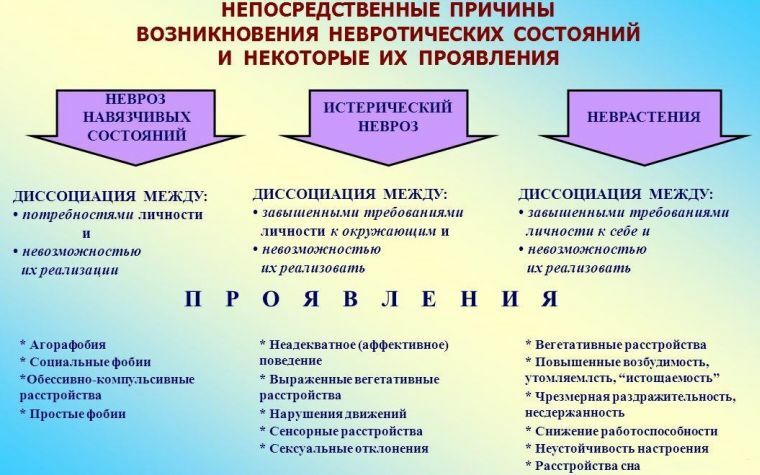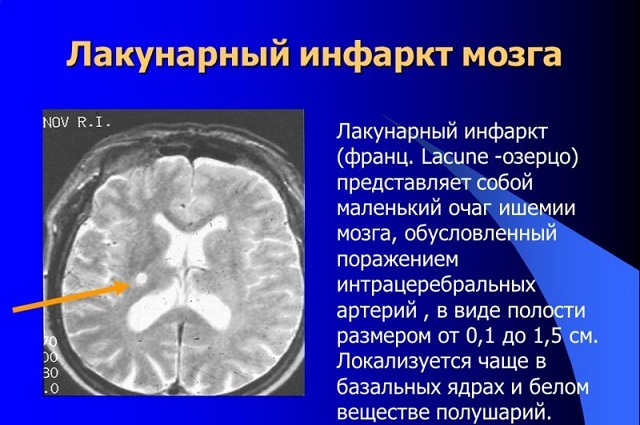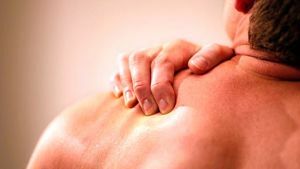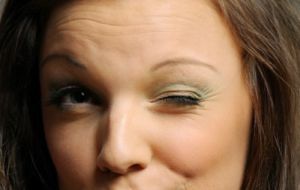 Gemifacial spasm is uncontrolled contraction and muscle pulsation on one side of the face. It looks like the squinting and closing of the eyes, the diversion of the tip of the nose or the corner of the mouth towards the side - this happens at one time or in turn. Provokes a spasm of cold exposure, bright light or stress.
Gemifacial spasm is uncontrolled contraction and muscle pulsation on one side of the face. It looks like the squinting and closing of the eyes, the diversion of the tip of the nose or the corner of the mouth towards the side - this happens at one time or in turn. Provokes a spasm of cold exposure, bright light or stress.
The duration of the reduction is from a few seconds to an hour. With the course of the disease on the affected side of the face, wrinkles and skin folds are indicated.
Facial hemispasm persists for a long time, there are short-term improvements in the form of the absence of involuntary contractions on the face.
Contents of
Contents of
- History of discovery of
- Reasons for primary and secondary nature
- Clinical features of
- Diagnosis of
- Methods of therapy
- Conservative - medicinal method
- Botulinum toxin
- Microvascular decompression
- Traditional medicine
- Than fraught?
History of the discovery of
Facial hemispasm was first described by Gowers in 1884.This pathology occurs after 50-60 years and mainly on one side of the face.
There is also a severe form of lesions when muscle spasms occur on both sides. The disease begins with short pulsations of the circular muscle of the eye.
Gradually, all the facial muscles are involved: the zygomatic, frontal, subcutaneous and others. Clinical movements progress with time and become resistant spasms of all muscles. Chronic nerve irritation on the face occurs due to various causes.
Causes of primary and secondary nature of
Specialists shared the causes of hemifacial spasm on primary and secondary. For primary reasons, the compression of the 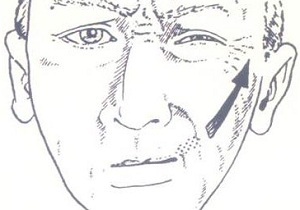 nerve at the time of its exit from the brainstem by a small blood vessel is cited - such spasms are called idiopathic.
nerve at the time of its exit from the brainstem by a small blood vessel is cited - such spasms are called idiopathic.
Secondary causes include compression of the facial nerve by vascular malformation, tumor, and so on.
Primary causes, that is, the contact of the facial nerve with a neighboring vessel, most often occurs in hypertensive patients, elderly people and women during menopause.
For the onset of facial hemispasm, there are enough factors presented by the list:
- damage to the cerebral cortex;
- Multiple Sclerosis;
- violation of blood circulation;
- cyst and brain tumor;
- genetic predisposition;
- toxic poisoning by harmful substances;
- for a long time using antibiotics or hormonal drugs.
Gradually, the sensitivity of the affected nerve increases and spasm attacks provoke minor effects of the external environment: cold, blinding light or strong sound.
Spasm resumed with eating, talking, laughing, which leads to irritation, sleep disturbance, rapid fatigue and stress, which exacerbate the course of the disease. This increases the pressure on the vascular walls, adjacent tissues swell and oppress the areas in the nerve region, as a result, he again excruciates the patient.
Clinical signs
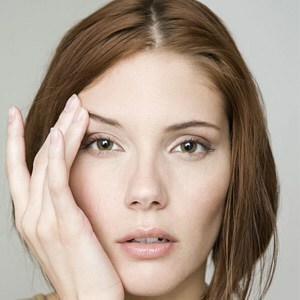 For the diagnosis of pathology, a thorough examination of the patient by a neurologist is required. As a rule, the manifestation of the disease begins with the twitching of the circular muscle of the eye, which occurs rarely. Gradually, neighboring muscles are involved in the spasm and pass to half of the face, and the frequency of attacks increases and reaches that the patient does not see the eye of one side.
For the diagnosis of pathology, a thorough examination of the patient by a neurologist is required. As a rule, the manifestation of the disease begins with the twitching of the circular muscle of the eye, which occurs rarely. Gradually, neighboring muscles are involved in the spasm and pass to half of the face, and the frequency of attacks increases and reaches that the patient does not see the eye of one side.
Atypical and secondary spasms occur with contractions of the muscles of the cheek, spreading upward in the face. Seizures start without a cause and can persist during sleep.
After a long period of time, the patient may develop moderate paresis( muscle weakness) of the facial musculature on the affected side. Bilateral hemispasm develops extremely rarely.
Diagnosis of
Diagnosis of gemospasm is based on the analysis of the patient's clinical picture. A neurologist is also being examined. Help to put the correct diagnosis help computed tomography and magnetic resonance imaging.
MRI helps to identify the cause of spasm of the facial nerve: a tumor, an aneurysm, malformation of the vessels, a focus of lacunar infarction, and others. Using MRI, you can identify primary or secondary spasm.
This pathology of symptoms is similar to some diseases, which are excluded when examining the patient. To do this, you need to make a differential diagnosis. The list of diseases and syndromes for diffodiagnosis is as follows:
- essential blepharospasm;
- facial myocardium;
- teak;
- cortical seizures;
- tardive dyskinesia;
- post-paralytic hemispasm.
Methods of therapy
Treatment of hemifacial spasm is carried out in various ways in complex, after which the disease disappears completely or is blocked. The method of therapy is chosen by the doctor after a careful examination of the patient.
Methods of combating facial hemispasm include medical treatment, injections of botulinum toxin, microvascular decompression, treatment with folk prescriptions.
The Conservative - Medication Method
The treatment program is aimed at the use of drugs from various pharmacological lists: Baclofen, Gabapentin,  Levetraz, Kponazepam.
Levetraz, Kponazepam.
- But this method has disadvantages: long-term reception is impossible because:
- the effect of the effect is reduced and it is necessary to increase the dosage;
- there is no indicative statistics, as large-scale studies have not been conducted;
- noted side effects, leading to drowsiness, loss of concentration, loss of quality of life.
But in the early stages of the disease there is enough conservative treatment that can get rid of the pathology completely.
Botulinum toxin
This method involves the administration of the drug to the affected nerve. Botulinum toxin type A is used. The drug works well in early 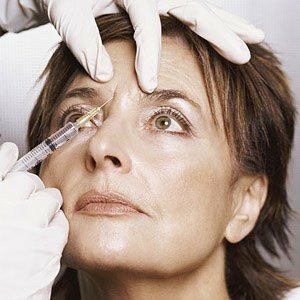 stages and in advanced forms of the disease.
stages and in advanced forms of the disease.
But this method also has disadvantages:
- high cost of treatment, in addition, repeated injections are required after 3-4 months, the drug requires responsible storage;
- is contraindicated in the treatment of patients with eye diseases or weak eyesight, the drug may cause impairment.
Therefore, before the treatment the doctor appoints a patient's examination from an allergist and an ophthalmologist.
The absence of contraindications promotes injection of botulinum toxin, which positively affects the cure of patients in 75% of cases.
Microvascular decompression
Gemispasm is considered a "conflict" of the facial nerve and vessel, therefore they are separated by a Teflon protector as a result of a neurosurgical operation.
The protector extinguishes the painful pulsations that form the facial spasm. Neurosurgical interventions are used very widely and have been practiced for more than 40 years. Statistics show that in 90% of cases, hemispasm disappears forever.
Traditional medicine
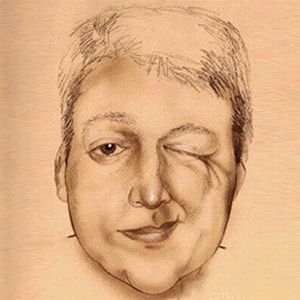 For the treatment of facial hemispasm, folk remedies apply compresses applied to the site of the person affected by spasm.
For the treatment of facial hemispasm, folk remedies apply compresses applied to the site of the person affected by spasm.
You can make an onion compress: to do this, one white onion head should be chopped in a meat grinder, laid between gauze layers and applied to the affected area. Similarly, garlic-lemon compress is done, for which it is necessary to grind several cloves of garlic, moisten them with lemon juice.
Apply both compresses neatly so as not to harm your eyes. These methods do not treat the disease, but relieve the pain, and soften the spasm of attack.
All treatment is carried out with the combination of a special diet. The diet includes products containing in the list of vitamins B, potassium and magnesium. These elements reduce the risk of hemispasm. From the diet it is necessary to exclude fatty foods and coffee.
What is fraught?
Facial hemispasm is fraught with the following complications:
- complete or partial hearing loss;
- temporary or permanent weakness of the facial musculature;
- ataxia.
There are less dangerous complications that are of a temporary nature: aseptic meningitis, hoarseness, rhinorrhea, perioral herpes.
The prognosis of a favorable cure gives a surgical intervention that helps almost all patients with an insignificant percentage of complications.
In order to prevent hemispasm, viral and bacterial infections should be excluded, it is important to avoid fatigue and depression. It is necessary to undergo vitaminization of group B and preparations of potassium and magnesium. It is also necessary to eat more foods containing these vitamins and minerals.
If you notice some unpleasant sensations in the area of the eyes or facial nerve, go straight to the doctor. Timely treatment gives a guarantee for a complete cure for the disease.

